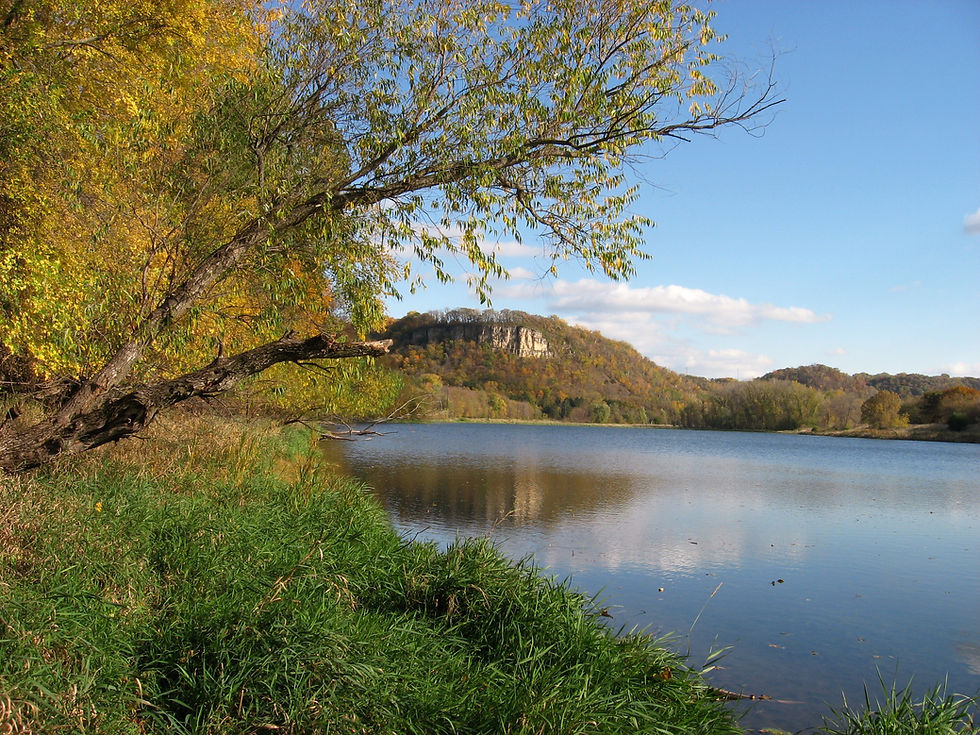Bluebirds and More
- wacoutanaturenotes
- Jul 15, 2020
- 2 min read

Bluebird Adult and Fledglings
As I ended my last post on Wacouta Nature Notes, I shared the fact that we had an active bluebird nest in our yard. On the 15th of June, 6 bluebirds fledged from the nesting box. Given the fact every morning I leave a handful of dried mealworms on the roof of the box, it has created a golden opportunity for photos of the young birds.

Two Young Bluebirds
Initially the new fledglings didn't understand the concept of feeding themselves. So they would just hang out and wait for one of the parents to come and serve them.

Feeding Time
As soon as a parent would show up, the feeding began in earnest.

An Eager Eater
Some fledglings were more demanding than others.

New Bluebird Nest
As soon as the first clutch of bluebirds had fledged, I thoroughly cleaned out the nesting box. Within a week, a new nest was built. It was interesting to observe the male bring in all the necessary grass and leave it at the entrance while the female would construct the nest. The nest is built within one day and finished off with very fine grass. The female will lay one egg per day until the clutch is complete. Normal clutch size will be from 4 to 6 eggs.

Great Spangled Fritillary
During mid-June I observed numerous Eastern Great Fritillary butterflies along the Rattlesnake Bluff Trail. It was interesting to note that the butterflies were frequenting just a couple isolated areas.
Upon doing a little research on the subject, I learned that the larval host plant for this butterfly is a variety of violets. Interestingly enough, the areas where I observed the most individuals had many violets growing.
This particular species of butterfly has a range covering a large range of North America.

Common Milkweed Flower
At about the same time as I was observing the fritillaries, the common milkweed was blooming along the trail. Monarchs were now more frequently being observed. There were not as many as last year, but still beautiful and encouraging to see.

Monarch Larva
The common milkweed plant (Asclepias syriaca) and the Butterfly weed (Asclepias tuberosa) are the two most important larval host plants in Wacouta for monarchs. This larva (caterpillar) is the second of four stages in the life of the monarch. The next time you hike the trail, keep an eye out for more.

Cutting the Prairie
As I mentioned in the last posting, the Wacouta Prairie is in the process of transitioning from soybean field to restored prairie. Unfortunately ,many of the newly emerging plants such as the yellow hawksbeard are not a desired species. On June 20th, Dan Tipke cut the entire prairie which will enable the seeded prairie to obtain more sunlight and thrive.




Thanks for the book and the kind note.
I related well to the memories in his book.
I discovered many things over my life while fishing just as the author did. I am sure you did too.
Thanks,again and we will try and fish this summer.
But
Bluebirds are beautiful, aren't they?
Bruce! Another amazing and educating NatureNotes! The bluebird family looks just like two siblings fighting and a parent trying to referee. Such a great shot! I'm looking forward to seeing what the prairie yields next season. Thanks for the wonderful photos and lessons. Please keep doing this - it's great! Marty & Dud